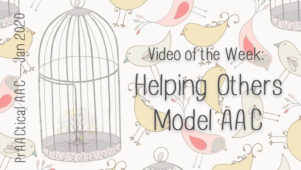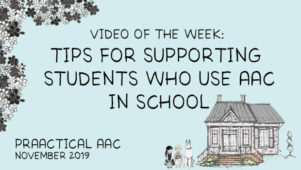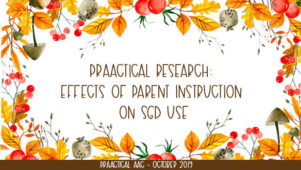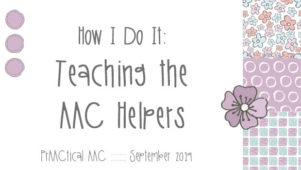Building AAC Facilitation Skills with Tabi Jones-Wohleber: MASTER PAL Training, Module 2
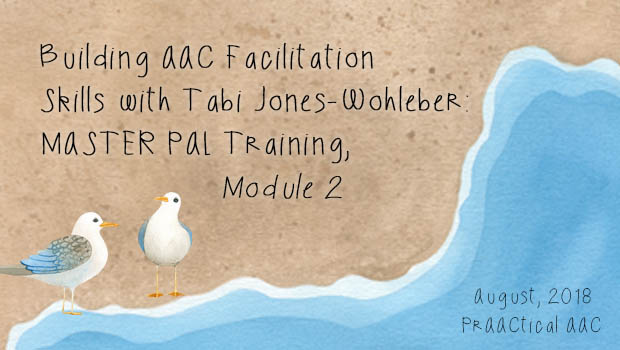
It’s a good day to talk training and we’re incredibly grateful to SLP Tabi Jones-Wohleber for sharing her partner training resources with us. In addition to her work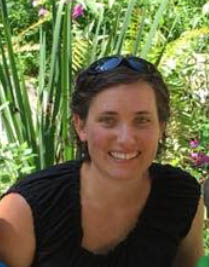 with the AT Team for Frederick County Public Schools in Maryland, Tabi serves young children and their families at West Virginia Birth to Three programs. In the initial post, Tabi introduced the overview module and its accompanying resources. Today, we move onto Module 2 where the focus is on aided language input.
with the AT Team for Frederick County Public Schools in Maryland, Tabi serves young children and their families at West Virginia Birth to Three programs. In the initial post, Tabi introduced the overview module and its accompanying resources. Today, we move onto Module 2 where the focus is on aided language input.
:::::::::::::::::::::::::::::::::::::::::::::::::::::::::::::::::::::::::::::::::::::::::::::::::::::::::
Modeling AAC is unquestionably a key component of teaching AAC. Most frequenters of PrAACtical AAC understand that modeling is a naturalistic strategy that functions to support language development by SPEAKING YOUR WORDS. However, misconceptions abound, which often results in modeling opportunities characterized as imitation or compliance tasks. This module unpacks the imperative of modeling to provide a common understanding of what it is (and is not), and why it is a necessary component of effective AAC implementation.
Model as a MASTER PAL
Module 2: Model
Facilitator Guidelines
For this session, you’ll need:
Warm-up Discussion
| Thinking Prompt | Making Connections / Talking Points |
| Think of a child in your life. What was his/her first word? | For most kids, the first word is a highly preferred word that gives them the power to obtain that item. “Mama, dada, cup, milk, doll, ball” are common as they reflect what is most valuable in the child’s environment. Kids learn early that communication has power. |
| How many times do you the child heard that word before speaking it? | By some estimations, a child hears his/her first words 2000-5000 times before speaking these words. |
| Have you ever had the experience of hearing a child use a word, phrase or expression that is a direct imitation of a familiar adult. …(oh, sh*t) | Kids learn the language that is modeled in their environment… the good & bad. |
| How do we respond when a child says “mama” or “baba”? | We get excited AND assign meaning. We repeat, rephrase, expand, and enthusiastically encourage kids. So they say it more. |
| What changes occur in a child’s behavior with repeated feedback:
-Frequency -Joint Attention |
This is the emergence of expressive language development and it starts around 1 year of age!! |
The Discourse
| Topics Addressed | Slide(s) | Talking Points / Examples |
| Title Slides | 1-2 | N/A |
| Communication Review | 3-7 | Review of Model as a MASTER PAL and AAC to ensure all participants are on the same page |
| Introduction & Warm-up Discussion | 8-12 | Explained on Slides.
See chart above for Warm-up Discussion |
| Modeling Statistics | 13 | Explained on Slide.
The amount or receptive input that precedes expressive output is ASTOUNDING! |
| Why modeling is needed | 14-15 | Explained on Slides.
Foreign languages are best learned in an immersive environment. The same is true of AAC. Slide 15 is a YouTube video, Aided Language Stimulation Explained. |
| Characteristics of Modeling | 16-19 | Explained on Slides. |
| Compliance is NOT Communication | 20 | If communication is framed as a compliance task, some students may choose NOT to communicate as a way to control the interaction. Many students have no other way to assert control. |
| Video Examples | 21 | Video Examples of Modeling in Action
|
| Examples of Core Vocab phrases to model across contexts | 22-25 | Explained on Slides. Can’t you just hear yourself using these phrases throughout the day. Now you see where you have opportunities to model. |
| Creating Communication Opportunities | 26-30 | Explained on Slides.
These strategies foster engagement and motivation for meaningful interactions and provide opportunities for modeling |
| Facilitator Led Interactive Modeling Activity | 31-37 | Activity is described below under Interactive Activities.
You will need to print a core board (link below) for each participant. |
| Communication is required for Engagement | 38-40 | Explained on Slides.
Slide 40 is animated. It breaks down the need for ample modeling of language in the context of learning before a child can be “tested” to demonstrate that learning. |
| How to Model | 41-44 | Explained on Slides.
Slide 44 is animated. Individuals learning to use AAC require ample modeling without expectation of a response in order to learn to use AAC expressively. |
| When modeling is hard | 45-50 | Examples of the following 2 strategies that address some of the challenges of modeling:
|
| Final Thought | 51 | Explained on Slide. |
| Let’s Recap | 52 |
|
Supplemental Handouts
- 5 Reasons to Comment Like Crazy
- Be Responsive: 5 Ways to Show you are Listening
- Self-Talk: 5 Ways to Say it Out Loud
- Project Core
Video Links
- Aided Language Stimulation Explained
- Introducing Aided Language Supports to Non-Verbal Children (Lily Gets New Words)
- Modeling Core Language (Classroom Modeling)
- Eddie Murphy-Party MODEL All the Time
Interactive Activities and Discussions
- Warm-Up discussion focuses on early language development to set the stage. Modeling is how language is learned!
- Utilize Project Core 36 Location Universal Core Communication Board to do a trainer lead modeling activity. (If participants are familiar with this communication display, provide a different core board).
- Have participants make the following phrases using the core board you provide: I like that, you want more, look that turns, he can not, put it on.
- Allow only 8-10 seconds. Ask participants to raise their hand when they have made the phrase on their core board. Let them know (emphatically) when their time is up. Typically, only about ½ of participants complete the task in the allotted time.
- Now show slides 32-37 to model a phrase. Show twice if needed. Then have participates make this phrase on their core board.
Talking points:
- Most generate the modeled phrase in about ½ the time as the unmodeled phrases.
- The modeled phrase is twice as long as the unmodeled phrases
- Modeling benefits learning: more confident pattern of movement across the board provides additional information that guides the generation of modeled phrase, repetition fosters learning, modeling “takes off the pressure.”
- Note: little words such as “the” do not need to be modeled to get the gist of the phrase.
Extension Resources
- AAC Language Lab:
- AssistiveWare:
- PrAACtical AAC:
- Project Core:
- Speak For Yourself:
- Tobii-Dynavox (Implementation Toolkit→ Learning Paths):
See you next week for Module 3!
Filed under: Featured Posts, PrAACtical Thinking
Tagged With: AAC partner training, inservice, partner training
This post was written by Carole Zangari

